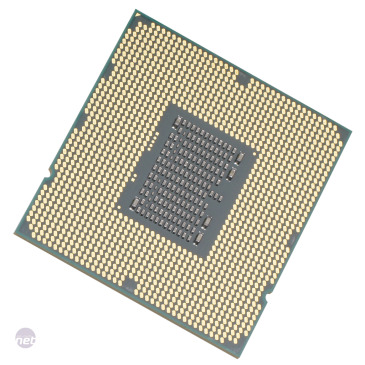Testing Methods
With the exception of HD Tach which we use to measure the performance of a motherboards SATA controllers, all of our benchmarks use real applications that give you a great idea of how well a product fares when performing the tasks you're likely to want it for.We test with our own Custom PC Media Benchmarks suite which can be downloaded so you can test your own system. It uses a combination of Gimp image editing, H.264 encoding with Handbrake and multi-tasking with 7-zip file compression combined with HD video playback. Finally, for our game testing we benchmark the board running Crysis and record the minimum and average frame rates.
Our benchmarks include stable overclocked results too, so you can gauge how much performance potential there is in the motherboard, and how much value this adds to your purchase.
Test Setup:
Motherboards:
- Gigabyte GA-X58A-UD7 (Intel X58)
- Asus P6TD Deluxe (Intel X58)

- Asus P6X58D Premium (Intel X58)
- Asus Rampage III Extreme (Intel X58)
- EVGA X58 SLI Micro (Intel X58)
- Gigabyte GA-X58A-UD3R (Intel X58)
Common Components:
- Intel Core i7-980X Extreme Edition (32nm, 12MB L3 cache, 25x133MHz; 3.33GHz, Turbo Mode and Intel power saving states left at BIOS default settings)
- Stock: 4GB DDR3 1,600MHz C8 at motherboard SPD settings
- Graphics Testing: ATI Radeon HD 5870 1GB
- PC Power and Cooling Silencer 750W PSU
- Seagate 7200.11 1TB SATA hard drive
- Intel X25-M 80GB SSD
- Windows 7 Home Premium 64-bit
- ATI Catalyst 10.2 WHQL
Overclocked Settings:
- Gigabyte GA-X58A-UD7 - 4.4GHz, 200MHz Base Clock, 22x multiplier, 1,600MHz triple-channel DDR3 memory at 8-8-8-24-74-1T.
- Asus P6TD Deluxe - 4.4GHz, 200MHz QPI, 22x multiplier, 1,600MHz triple-channel DDR3 memory at 8-8-8-24-74-1T.
- Asus P6X58D Premium - 4.4GHz, 200MHz QPI, 22x multiplier, 1,600MHz triple-channel DDR3 memory at 8-8-8-24-74-1T.
- Asus Rampage III Extreme - 4.4GHz, 200MHz QPI, 22x multiplier, 1,600MHz triple-channel DDR3 memory at 8-8-8-24-74-1T.
- EVGA X58 SLI Micro - 3.52GHz, 160MHz QPI, 22x multiplier, 1,600MHz triple-channel DDR3 memory at 8-8-8-24-74-1T.
- Gigabyte GA-X58A-UD3R - 4.4GHz, 200MHz QPI, 22x multiplier, 1,600MHz triple-channel DDR3 memory at 8-8-8-24-74-1T.
Overclocking
The GA-X58A-UD7 is very easy to overclock, thanks to its user-friendly BIOS. To find the maximum stable QPI, we simply had to drop the CPU multiplier to 12x and set the voltages as follows; the vcore to 1.38125V, the QPI/VTT to 1.375V, the CPU PLL to 1.96V, the chipset to 1.3V and the Southbridge to 1.2V.This allowed us to run Prime95 stably with the QPI at 220MHz, which equals the best X58 motherboards we've seen over the years. Any higher than 220MHz prevented the GA-X58A-UD7 from POSTing, although it has a good recovery feature. A hard reset is sufficient to bring the system back to life without losing all your BIOS settings.
We then proceeded to find out if the GA-X58A-UD7 could handle the hefty power draw of our test Core i7-980X Extreme Edition CPU. With the CPU multiplier set to 22x and the QPI to 200MHz, the GA-X58A-UD7 succeeded in overclocking the CPU to its 4.4GHz air-cooled limit. This overclock boosted the overall Media Benchmarks score to 2,622, which is the one of the fastest scores we've seen an X58 motherboard achieve with this CPU installed.

MSI MPG Velox 100R Chassis Review
October 14 2021 | 15:04









Want to comment? Please log in.